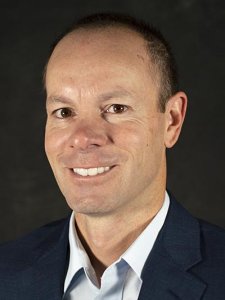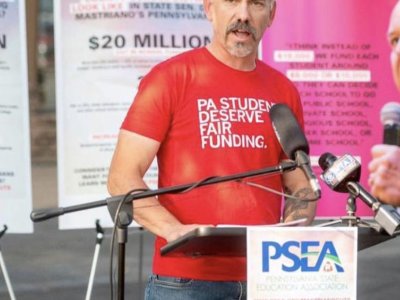In this article, you'll learn:
- Why severe storms are becoming a bigger threat to local power grids
- The most common points of failure in electrical infrastructure during a weather crisis
- Actionable strategies that any community can use to build resilience and prevent future outages
On April 29, 2025, a powerful line of storms swept across the Northeast, leaving a path of destruction from Ohio to central Pennsylvania. The event was a textbook example of a bow echo—a line of thunderstorms with a leading edge that “bows” outward on radar, often signaling dangerous straight-line winds. Bow echoes, like the one on April 29, that produce wind damage over a particularly large area (at least 60 miles wide and 400 miles long), are sometimes also referred to as "derechos."
Impact of the storm on the local community
The storm knocked down trees that closed roads throughout Centre County, damaged homes and vehicles, and toppled power lines. Roadways across the region were blocked and damaged, some for days, forcing rerouting that disrupted access to schools, the airport, businesses, and public services. Nearly half of Centre County lost power immediately.
By the following morning, more than 30,000 people were without power across several municipalities. Over 60% of State College Borough and 70% of Ferguson Township, municipalities immediately adjacent to Penn State’s University Park campus, were without power for at least 24 hours. The State College Area School District, along with several other schools in the county, closed due to power outages. Some schools ran on generators in the following days.
According to Jonathan Risley, Assistant Chief of Emergency Management at Centre Region Council of Governments, some residents and businesses were without power for up to a week. While critical infrastructure in health care and water was not catastrophically affected, outpatient facilities were forced to reschedule appointments, interrupting care for some individuals. Residents who relied on medical equipment, such as respirators, faced significant challenges. Those relying on private wells were provided access to water by the State College Borough Water Authority.
Why was the grid so vulnerable?
The local electric grid depends on a network of transmission lines, substations, and distribution lines to move electricity from power plants to homes and businesses. Much of this infrastructure—particularly distribution lines installed along streets—is exposed to the elements, making it highly vulnerable to storm-related damage.
The majority of U.S. outages (about 70 percent) occur at the distribution level (along streets and the wires connecting distribution lines to homes and businesses). Severe weather, such as the April 29 event, can damage infrastructure and disrupt the closed circuit required for electricity to flow.

A common cause of damage is strong wind, which can knock down poles carrying electric wires or topple trees that then fall onto power lines. Lightning can also disrupt power transmission by striking transmission infrastructure directly or by hitting nearby objects such as tree limbs that can fall and damage power lines. In some cases, flooding can also damage transmission equipment if it is submerged.
In this case, local renewable and battery resilience projects supported by the grid operator helped to mitigate the impacts of the damage. The University Area Joint Authority (UAJA) has a behind-the-meter battery system connected to a 5-megawatt solar farm. According to Jason Wert of Rettew Engineering, who manages the system, UAJA’s behind-the-meter batteries assisted PJM—the regional grid operator—in maintaining grid stability for several days. This not only supported UAJA’s operations but also contributed to regional resilience.
Lessons for improving resilience
The vulnerabilities exposed by this Pennsylvania storm aren’t unique—most U.S. communities face the same risks from extreme weather. In the aftermath, several key insights have emerged to inform future planning and preparedness:
- Invest in microgrids and battery systems to provide backup power during outages.
- Improve vegetation management near power lines to reduce damage from falling trees and limbs.
- Consider underground power lines in high-risk areas, while balancing cost and vulnerability to flooding.
- Upgrade aging infrastructure, ensuring poles and wires meet modern wind-resistance standards.
- Continue regional climate planning, drawing on input from local governments, utilities, Penn State researchers, and the public to guide sustainable decisions.
- Maintain strong interagency coordination, which proved critical to the Centre Region’s effective emergency response.
The April 29 storm was a wake-up call. It revealed both the fragility of local energy infrastructure and the strength of coordinated community planning. As climate change drives more frequent and intense storms, regional resilience strategies—such as microgrids, climate planning, and emergency preparedness—will become increasingly essential.
This was not a one-time event. It may be a glimpse of what lies ahead.
Seth Blumsack researches the electricity and natural gas industries; environmental management related to energy and infrastructure; resilience of energy infrastructure; regulation and deregulation in network industries; network science; risk analysis; and managing complex infrastructure systems.
Peter Buck is the director for education and co-director of the Local Climate Action Program. He instigates faculty, staff, students, and the public to imaginatively integrate sustainability into all they do.
Michael Helbing is a staff attorney for Penn State’s Center for Energy Law and Policy, where he is actively involved in many of the Center’s research and educational activities.
Paul Markowski and his research group study the dynamics and prediction of convective storms and their attendant hazards, particularly tornadoes, using state-of-the-art observations, computer simulations, and theory.
Hannah Wiseman teaches and writes in the areas of energy law, oil and gas law, land use regulation, environmental law, and administrative law. Her work focuses on the mechanics and design of regulation and governance in these areas.









